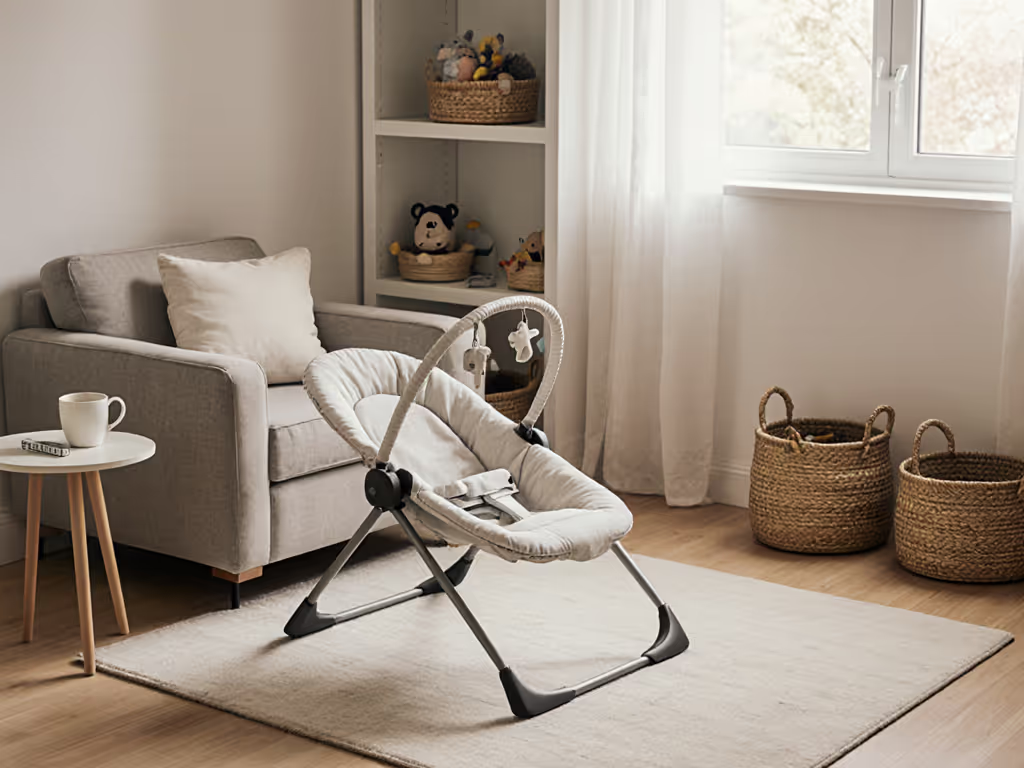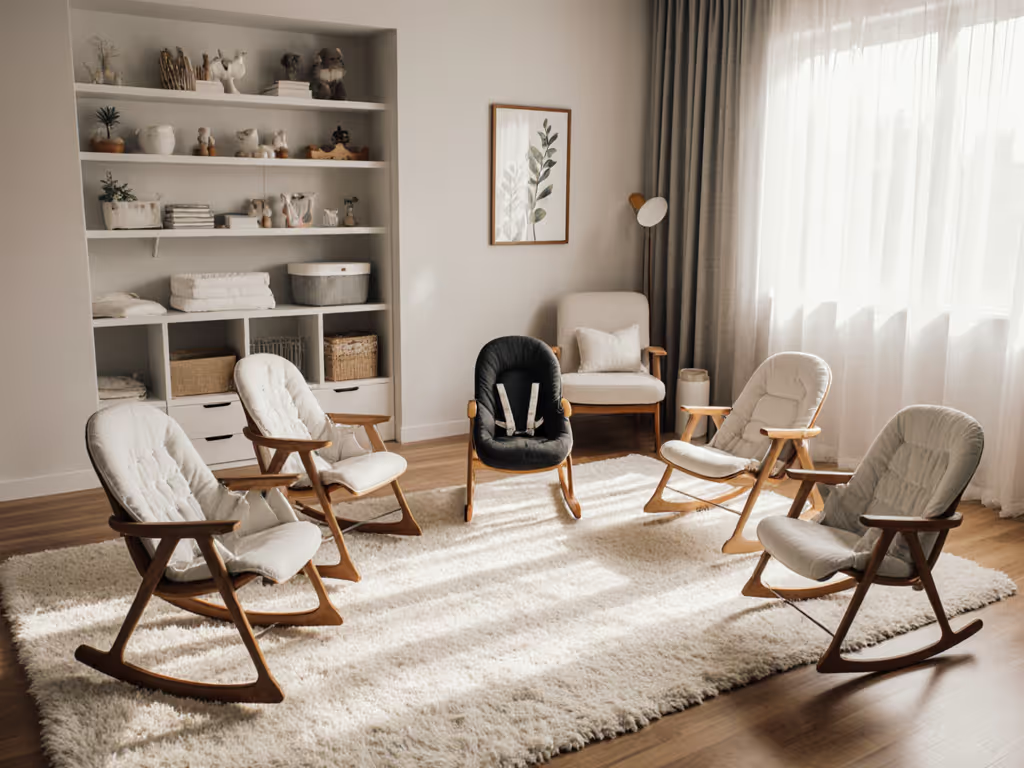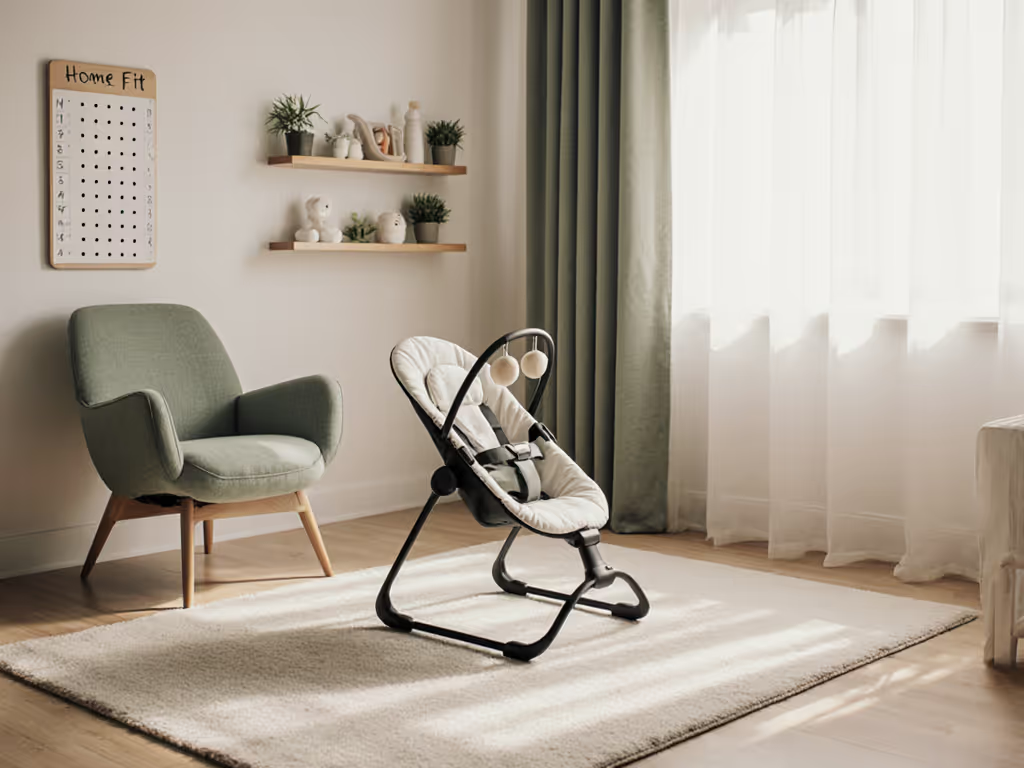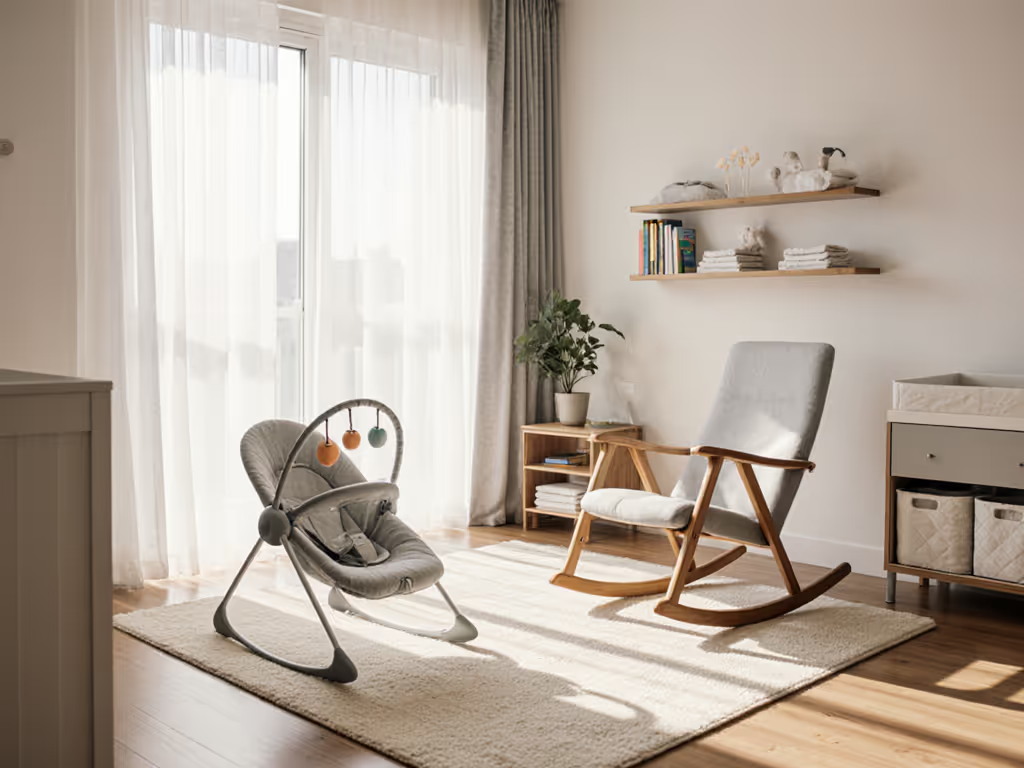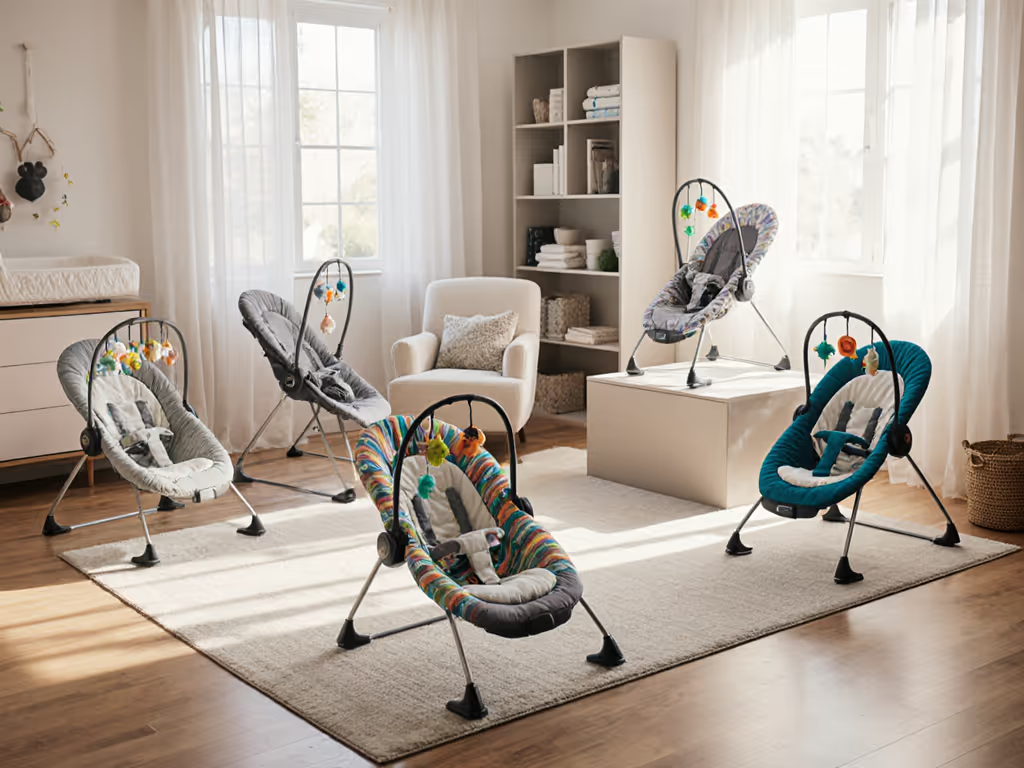
Baby Bouncer Usage Instructions for Safe Daily Use
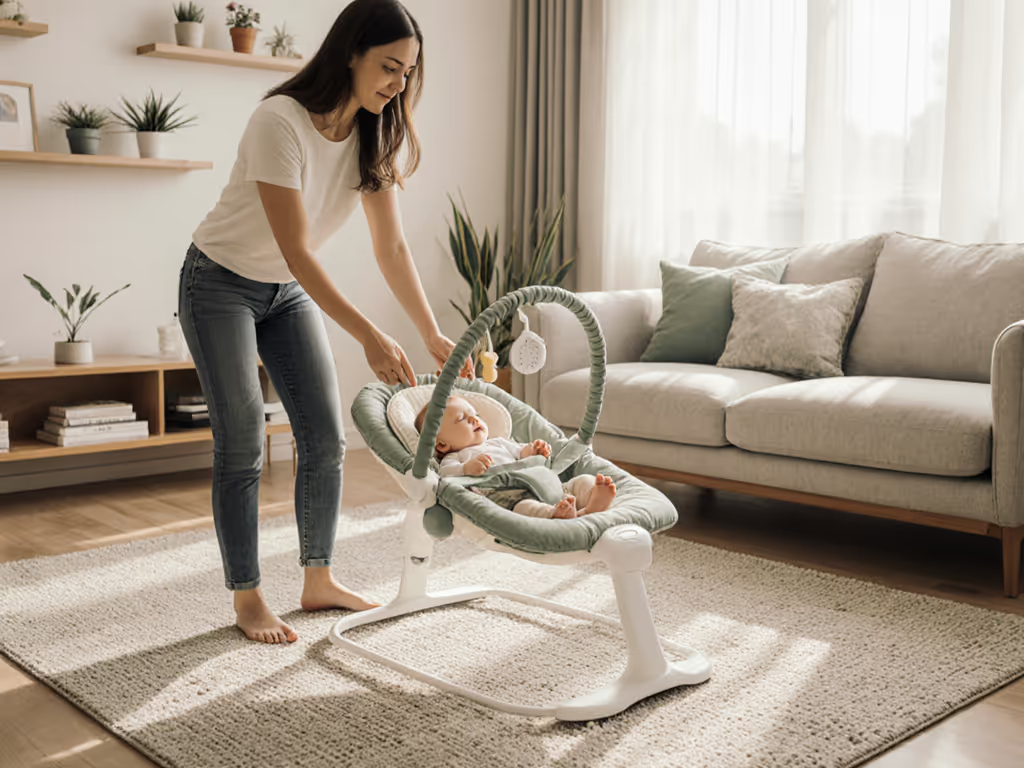
Did you know that over 90 percent of parents say safety is their top concern when setting up a new baby bouncer? Getting ready for your baby’s first bouncer session can feel overwhelming, especially with so many parts and guidelines to consider. Taking the right steps ensures your little one gets a comfortable and safe experience right from day one, giving you peace of mind as they play and rest nearby.
Quick Summary
| Key Point | Explanation |
|---|---|
| 1. Carefully inspect all bouncer components | Ensure the frame, fabric, and harness are damage-free to guarantee safety during use. |
| 2. Choose a safe, flat location | Position the bouncer on a stable floor, away from hazards like windows and cords, for optimal safety. |
| 3. Adjust safety straps properly | Ensure harness straps hold your baby securely but are comfortable enough for free movement to prevent accidents. |
| 4. Supervise your baby at all times | Always keep an eye on your baby while in the bouncer to prevent any potential risks or accidents. |
| 5. Conduct a thorough safety check | Before use, visually inspect the entire bouncer to ensure it is secure and safe for your baby. |
Step 1: Prepare the baby bouncer for first use
Getting your baby bouncer ready for first use requires careful attention to detail and safety protocols. You will want to transform this piece of baby gear from packaging to a safe, welcoming spot for your little one.
Start by carefully unboxing the bouncer and laying out all components on a clean, flat surface. Take a moment to review the manufacturer's instruction manual thoroughly. This step might seem tedious, but it is your roadmap to proper assembly and safety.
Inspect each component meticulously. Check the frame for any signs of damage or manufacturing defects. Run your fingers along the frame connections and verify that screws are tight and secure. The base should feel stable and have non slip rubber tips to prevent unwanted movement during use.
Next, focus on the fabric and harness system. Spread out the fabric and look for any tears or loose threads. The harness should have smooth buckle mechanisms and no fraying. According to product safety guidelines, a secure harness system is critical for preventing potential accidents.
Pro Tip: Before placing your baby in the bouncer, do a gentle stress test by applying light pressure to different areas and checking stability.
Once you have confirmed everything looks perfect, you are ready to set up the bouncer in its designated area. Choose a flat surface away from potential hazards like electrical cords, sharp edges, or unstable furniture. Your careful preparation ensures a safe and comfortable space for your baby to rest and play.
Here's a summary of safety checks to perform for each bouncer part:
| Part of Bouncer | Safety Check | What to Look For |
|---|---|---|
| Frame/Base | Inspect for damage<br>Tighten screws<br>Check stability | No cracks or bends<br>Firm, wobble-free base |
| Fabric & Harness | Check for tears<br>Inspect harness<br>Test buckles | No frayed seams<br>Secure buckles<br>Snug straps |
| Placement Location | Ensure flat surface<br>Clear hazards<br>Stable footing | No cords, sharp edges<br>Non-slip tips in contact |
| Before Use | Final visual check<br>Stress test<br>Supervise baby | All parts secure<br>No wobble<br>Baby within sight |
What comes next is positioning the bouncer and getting ready for your baby's first bouncing experience. The groundwork you have just completed sets the stage for many safe and enjoyable moments.
Step 2: Securely place the bouncer in a safe location
Choosing the right spot for your baby bouncer is more than just finding an empty space. You are creating a safe zone where your little one can relax and play without potential risks lurking nearby.
The golden rule is simple: floor placement only. Never place the bouncer on raised surfaces like tables, sofas, or beds. Floors provide a stable, secure foundation that prevents accidental tipping or sliding. Look for a completely flat area with a hard surface such as hardwood, tile, or short pile carpet.
Scanning your environment for potential hazards is crucial. Keep the bouncer far from windows, electrical outlets, curtain cords, and household appliances. Those innocent looking blinds or heater cords can become dangerous if your curious baby manages to reach them. Aim for a location at least three feet away from any potential entanglement or strangulation risks.
Consider room traffic patterns when selecting the bouncer location. You want a spot that allows you to see your baby easily but is not directly in high movement areas where someone might accidentally bump or trip over the bouncer. A quiet corner of the living room or a calm section of the kitchen often works well.
Safety Alert: Always maintain a clear zone around the bouncer with no hanging cords or reachable objects that could pose a risk to your baby.
Check the floor surface for stability before positioning the bouncer. Ensure the non slip rubber tips are making full contact with the ground. Gently press down on different areas of the bouncer to confirm it will not wobble or shift when your baby moves.
With the bouncer carefully placed, you have just created a secure little world for your infant to enjoy.
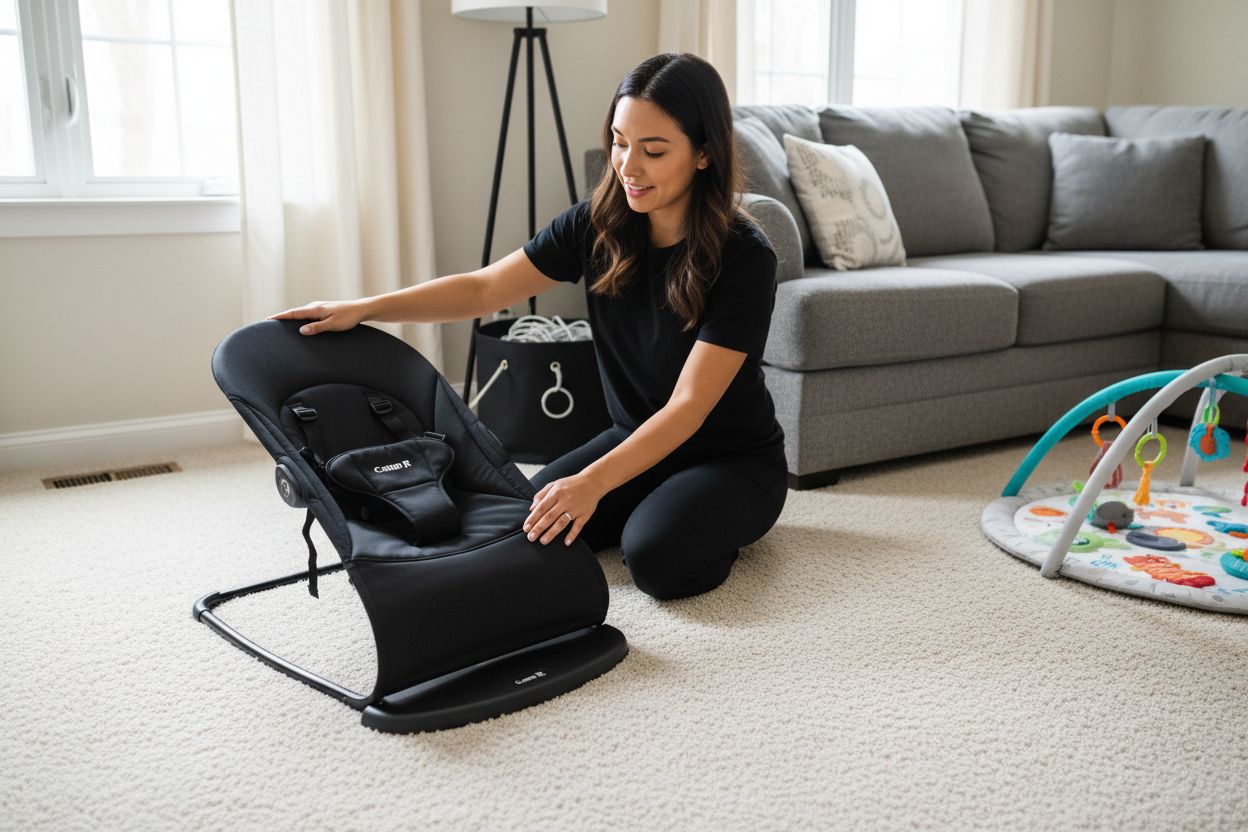 Next comes the exciting part: introducing your baby to their new resting and play space.
Next comes the exciting part: introducing your baby to their new resting and play space.
Step 3: Gently position your baby in the bouncer
Bringing your little one into their bouncer is an art of gentleness and careful observation. You want this transition to be smooth comfortable and reassuring for your baby.
First things first check your baby is developmentally ready. Medical experts recommend using a bouncer only when your infant can support their head independently. Most babies reach this milestone around 3 to 4 months old. If your baby cannot hold their head steady do not use the bouncer.
Approach the bouncer with calm and deliberate movements. Support your baby's head and neck while slowly lowering them into the seat. Slide one hand under their bottom and the other behind their back providing full support during placement. Move slowly and watch your baby's facial expressions to ensure they feel secure.
Secure the safety harness carefully but not too tightly. You should be able to fit two fingers comfortably between the harness and your baby's body. The straps need to be snug enough to prevent sliding but loose enough to allow natural movement.
Pro Tip: Talk softly to your baby during positioning. Your calm voice helps them feel safe and reduces potential anxiety about the new environment.
Observe your baby's initial reaction closely. Some infants settle immediately while others might need a few moments to adjust. If they seem uncomfortable or distressed remove them and try again later. Every baby has a unique comfort level with new experiences.
With your little one now nestled safely in the bouncer you are ready to enjoy some hands free moments while keeping your baby content and secure. Watch for their cues and be prepared to interact or adjust as needed.
Step 4: Adjust safety straps for proper fit
Properly adjusting your baby bouncer's safety straps is not just a recommended step it is a critical safety requirement. You are creating a secure cocoon that will protect your little one during their bouncing adventures.
Start by removing your baby from the bouncer. Safety experts emphasize that strap adjustments should always happen with the baby out of the seat to prevent any accidental pinching or discomfort. Lay the bouncer on a flat surface where you can clearly see all harness components.
Examine the harness system carefully. Most baby bouncers have shoulder straps crisscrossing the chest area and a lower strap that connects between the legs. These three points create a secure triangle that prevents your baby from sliding or falling out of the seat.
Begin adjusting the shoulder straps first. They should sit comfortably at or just below your baby's shoulders. When you place your baby back in the bouncer the straps need to be snug enough that you cannot pinch excess fabric but loose enough to allow natural movement. A good test is ensuring you can fit two fingers between the strap and your baby's collarbone.
Safety Warning: Extra clothing or blankets can interfere with harness fit. Always adjust straps directly against your baby's body to maintain proper security.
Check the lower strap that connects between the legs. This prevents your baby from slipping downward and ensures they remain centered in the bouncer. The strap should sit close to the body without causing discomfort or restricting leg movement.
Once you have made adjustments test the harness by gently tugging on each strap. They should feel secure and not easily slip or loosen. Your careful attention to these details creates a safe environment for your little one to relax and play.
With the straps perfectly adjusted you are now ready to comfortably and safely place your baby in the bouncer for their next exciting adventure.
Step 5: Check comfort and safety before use
Before letting your baby enjoy their bouncer you will want to perform a comprehensive comfort and safety check. This final step ensures your little one has a secure and pleasant experience.
Start with a visual inspection of the entire bouncer. Look for any signs of wear damage or loose components that might compromise safety. Check fabric for tears fraying or weakened seams. Run your hands along the frame to feel for any unexpected rough edges or potential pinch points.
Test the bouncer's stability by gently pressing different areas. The seat should not wobble or shift unexpectedly. Verify that non slip surfaces are intact and the base remains firmly planted on the ground. Any unexpected movement could create a potential safety risk for your baby.
Consider your baby's current developmental stage. Medical experts recommend using bouncers for short periods typically 15 to 20 minutes a few times daily. Prolonged sitting can potentially impact muscle development and overall physical growth. Watch for signs of your baby becoming uncomfortable or restless.
Critical Safety Note: Always supervise your baby while they are in the bouncer. Never leave them unattended even for a moment.
If your baby falls asleep in the bouncer move them immediately to a flat safe sleep surface like a crib or bassinet. Bouncers are not designed for extended sleeping and can create breathing risks for infants.
Pay attention to your baby's reactions during initial use. Some infants love the gentle motion while others might feel overwhelmed. Be prepared to remove them quickly if they show signs of distress or overstimulation. Your attentive observation is key to ensuring a positive bouncer experience.
With these careful checks completed you are now ready to introduce your baby to a fun and safe bouncing environment. Enjoy these precious moments of exploration and comfort.
![]()
Discover Safe and Space-Saving Baby Bouncers for Everyday Routines
After carefully setting up your baby bouncer for daily use and completing every safety check, you might find yourself wondering how to pick a bouncer that truly fits your compact living space and your busy schedule. Many parents face the challenge of finding a model that balances safety, comfort, easy setup, and essential space-saving features. Your top priority is a secure environment for your baby, but you also want a solution that makes daily life a little easier and your limited space more manageable.
Ready to find a bouncer that perfectly matches your needs and lifestyle? Visit Bouncer Lab for expert comparison guides, honest product reviews, and practical advice on space-efficient, easy-to-clean infant bouncers. Let our guides show you the best options that support safe, stress-free daily use. Do not wait—your peace of mind and your baby's comfort start with the right information. Take the next step and browse our latest guides and reviews today.
Frequently Asked Questions
How do I prepare the baby bouncer for first use?
To prepare the baby bouncer for first use, start by unboxing it and laying out all components on a clean surface. Inspect each part, review the manual carefully, and ensure that everything is in good condition before setting it up in a safe location.
What safety checks should I perform on the bouncer?
Perform safety checks on the frame and base by inspecting for damage, ensuring screws are tight, and verifying stability. Also, check the fabric and harness system for tears and secure fittings, as well as ensuring clear surroundings free from hazards.
How do I safely place my baby in the bouncer?
To safely place your baby in the bouncer, ensure they can support their head independently, typically around 3 to 4 months. Support their head and neck while gently lowering them into the seat, and secure the harness snugly but comfortably, allowing for a two-finger width between straps and their body.
How do I adjust the safety straps for my baby's comfort?
Adjust the safety straps by removing your baby from the bouncer first and then checking that the shoulder straps sit just below their shoulders. Ensure they're snug enough that you can’t pinch excess fabric but loose enough to allow natural movement, testing with two fingers against their collarbone.
What should I check for before using the bouncer?
Before using the bouncer, conduct a thorough inspection of the entire unit for wear or damage, checking the fabric, frame, and stability. Ensure that it’s positioned on a flat surface, the non-slip tips are intact, and your baby's developmental readiness matches the bouncer's use guidelines.
How long can my baby stay in the bouncer each day?
Experts recommend using the bouncer for short periods of 15 to 20 minutes, a few times daily. This ensures your baby's comfort and supports healthy muscle development while preventing overstimulation or discomfort.

